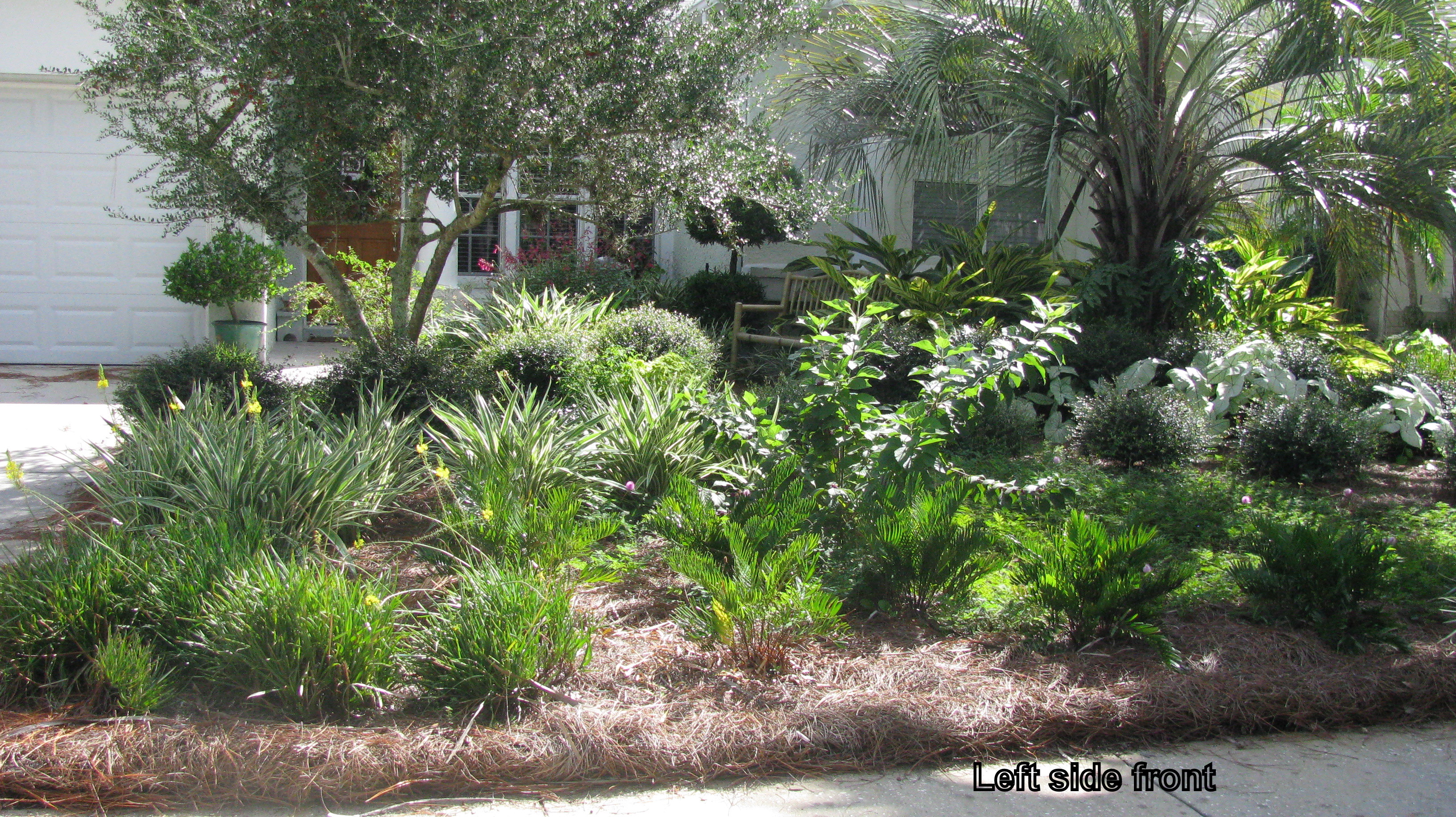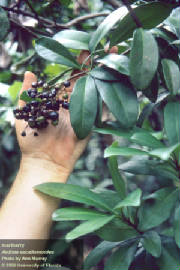A friend of mine shared an article about the importance of planting native trees and plants to help provide
for feeding baby birds. Insects that are used to feed baby birds evolved along with the native plants and the birds.
If the entire landscape is planted with foreign derived plants, the insects, especially their larvae that feed on the native
plants, will not be available to feed the growing birds. This led me to consider writing this article.
You might not think it is important to provide for wildlife
especially if you live near a preserve or conservation area. However, Pinellas County is very densely populated (3,347
people per square mile) leaving very little open natural space for wildlife. By wildlife, I do not mean just larger
animals like deer, bobcats, and coyotes. We need to consider birds, butterflies and other small creatures as well.
Bees and other pollinators have gotten a lot of press lately too. One reason postulated about the decline in bees is
the decline in natural sources of nectar plants.
The way that we manage our yards and neighborhoods can affect the wildlife present. If each resident provided
some native habitat for wildlife it would greatly increase the biodiversity of the whole neighborhood and could have a good
impact on the surrounding habitat in the preserve or conservation areas. Unfortunately, the conservation areas are separated
from each other by houses and landscapes. If each of us planted some areas with native plants and reduced pesticide
use we could provide a corridor to connect the conservation areas and also the preserve so that animals would be able to travel
from one natural area to another.
Be cautious
about planting invasive, exotic plants or allowing them to grow in your landscape. They outcompete and destroy native
habitat when they escape your yard. Brazilian pepper, air potato, Chinese tallow, and sword fern are examples of invasives
growing in Pinellas County. What you do in your own yards does affect the nearby wildlife populations. We can
all do a lot to provide wildlife

habitat. Essentially, wildlife habitat consists
of food, shelter, water, and space. It is best to provide plants that produce
fruit and seeds to feed the wildlife. If we provide unnatural food sources, wildlife can become unhealthy and possibly
die prematurely. This is especially true of wild animals.
There are several things that we can do in our landscapes to help wildlife flourish:
-
Provide food. Select plants (preferably Florida native) with seeds, fruit, foliage, or flowers
that butterflies, insects, birds, and other wildlife like to
 eat. There are a number of plants that provide nectar rich flowers, berries, fruits and seeds.
eat. There are a number of plants that provide nectar rich flowers, berries, fruits and seeds. - Reduce insecticide use. Every time insecticides are used on your lawn or landscape plants, you reduce
insect populations, which provide an important food source for birds and other small critters.
- Reduce
the amount of mowed lawn area. Planting low-traffic areas with a variety of groundcovers instead of grass can provide
more potential food sources and habitat for wildlife. My pet Black Racer snake lives in my groundcover front yard. Consider
only having lawn grass in areas that are needed for children and pets to play.
- Increase
vertical layering. Use plants with varying heights and sizes together to provide cover and more feeding opportunities
for diverse species of wildlife. This also provides more opportunities for birds to build nests.
- Supply
water. All water features will attract wildlife if the water is not treated. A natural water source like a pond or
creek is nice, but a fountain or birdbath will also attract wildlife. Be sure to clean a birdbath every few days by scrubbing
the surfaces with a brush. It is best not to use soap or bleach. Also, be sure to change the water every couple of days to
discourage mosquito growth.
- Manage pets. Some pets
will kill wildlife if left outside unsupervised. Dogs and cats are natural hunters. If you allow your pets
to kill wildlife, you will negate any efforts you make toward attracting wildlife. This is especially true for cats allowed
outdoors. In Pinellas County, it is against the law to leave cats outside. Scientists estimate
that domestic cats kill hundreds of millions of birds and possibly more than a billion small mammals each year.
Information for this article was gleaned from the University
of Florida publication; Landscaping Backyards for Wildlife: Top Ten Tips for Success (http://edis.ifas.ufl.edu/uw175)
The University
of Florida has publications with more information on this subject:
Landscaping for Wildlife
http://www.wec.ufl.edu/extension/landscaping/
Florida Backyards for Wildlife program http://www.wec.ufl.edu/extension/landscaping/fblw/
Using Native Plants http://livinggreen.ifas.ufl.edu/landscaping/using_native_plants.html
Gardening for Birds http://gardeningsolutions.ifas.ufl.edu/giam/fyn/florida_friendly_yards/bird_gardening.html
Butterfly Gardening in Florida http://edis.ifas.ufl.edu/pdffiles/UW/UW05700.pdf

